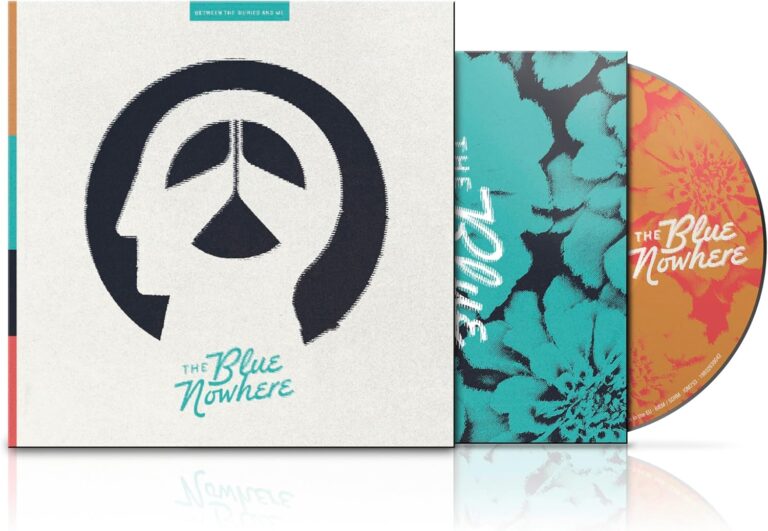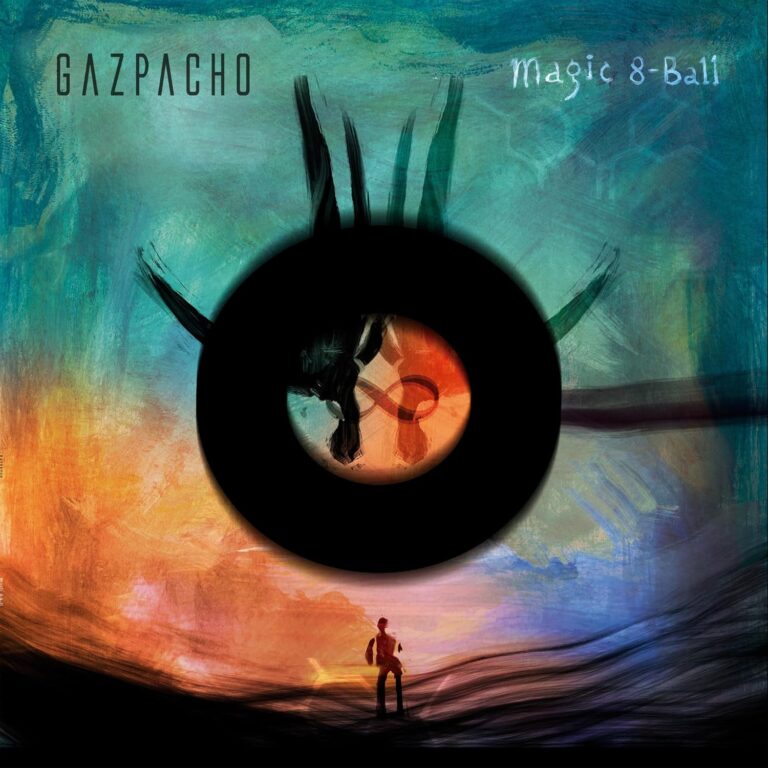Dream Theater’s resilience is long noted, but even so it is safe to say that no-one could have predicted that ‘a dramatic turn of events’ would turn out quite as well as it did in the light of a key member departing the band. Whilst it had a ring of theatre about it, the accompanying documentary did two things very well – firstly it showed that Mike Mangini was a devilishly competent drummer and secondly it showed that his passion for joining the band actually matched the other members’ passion to succeed following the messy departure of Mike Portnoy. The one element left open to question was Mike’s own skills in the song-writing department. With Portnoy such a large part of the Dream theater sound, the band successfully proved they could move beyond him, but much of the song writing had been completed by the time Mangini joined and so it is only now, on the band’s bravely eponymous album, that we will see for the first time how Dream Theater sound in their current configuration.
The band are clearly confident in their new release. Not only is the album untitled, but it comes free of the typically lavish cover designs that the band utilised in the past. Simply adorned by that oh-so-familiar logo the cover carries a clear message: ‘Dream Theater’s music is strong enough to stand without the benefit of gimmicks, listen without prejudice.’
That Dream Theater have overcome adversity and come back stronger is immediately imparted to the listener with the huge, no, HUGE orchestral opening track ‘false awakening’. This is Dream Theater at their most bombastic, John Petrucci’s guitars battling against the martial percussion of Mike Mangini and a near operatic sensibility that seems to have been beamed in from Nightwish at their most grandiose. As a cinematic curtain raiser it takes some beating and it has you instantly hooked, wondering what on earth is going to come next. Next, it transpires, is the blistering, full-on metal riff of ‘enemy inside’, a storming track in the vein of ‘root of all evil’ that sees the band firing on all cylinders. Sensibly, whilst Jordan Rudess’ invaluable keyboards are firmly present, the emphasis in the mix is on the guitars, pushing Dream Theater’s more energetically metallic elements to the fore whilst maintaining the sympathetic mix of melody and variety that has made DT such a powerful progressive force in the modern music scene. Fresh from the success of his own solo album, James LaBrie sounds utterly captivating, his vocals more powerful than ever, and the whole band seemingly buoyed by the success of ‘a dramatic turn of events’. With a lighter touch, ‘the looking glass’ taps into a latter-day genesis feel with a more overtly pop music edge than has been heard from Dream Theater in a good while. The term ‘pop’ in this context, of course, is not being used as a pejorative but rather to denote the strong, memorable melody that anchors the song no matter how energetic the excursions of the band might be. It’s a song that harks back to the late eighties when progressive bands were shifting to a more streamlined sound and found themselves embraced by the mainstream as a result. The musicianship, of course, was still faultless; the music was simply expressed in a way that appealed to a wider and more varied audience and the bands filled stadiums as a result and you can imagine that, if the modern music world was less fickle, ‘the looking glass could be equally embraced.
‘Enigma machine’ sees the band heading into darker, heavier territory, recalling the furious might of ‘train of thought’ but with some gloriously unhinged guitar/keyboard work from John and Jordan, the pair sounding chaotically thrilled to be allowed such freedom of expression. It’s an epic Dream Theater workout, purely instrumental, that truly allows the band’s members to shine in their respective fields, and it is easy to believe that this is a song that will become a live favourite for years to come. Mike Mangini’s drumming, meanwhile, is not only insanely powerful, but also superbly inventive, the talented drummer never afraid to stamp his authority on the track no matter how ludicrous the instrumental battles between John and Jordan might be and it seems easy to see now that not only was he the perfect choice for Dream Theater, but possible the only choice.
It would not be a Dream Theater album without at least one big ballad and they don’t come much bigger than the piano-led ‘the bigger picture’. Like most Dream Theater ballads it is a song that is likely to be divisive – in the context of the album it works well and it has a deeply muscular chorus that stops it from falling into the same overly sentimental trap as ‘the answer lies within’. It even edges into queen territory at one point thanks to John’s multi-tracked guitars, making it one of the best Dream Theater ballads yet delivered. Indeed, as the song progresses, so earnest is the subject matter and so energetic are the band in piling on the instrumentation that it is hard not to be swept up by the sheer ludicrousness of it all. ’Behind the veil’ takes things down a peg, opening in a wash of ambience that drifts gently from the speakers. It is a moment of much needed respite that allows something of a reset following the mighty excesses of ‘bigger picture’ and with its lush synth work it seems to be very much Jordan Rudess’ show before John reappears with a Metallica-sized riff backed by layers of synth strings to give the song a charged, cinematic feel. There is groove and power here and James responds in kind, adopting the same aggressive vocal style heard on ‘a rite of passage’, whilst the band deftly switch to a wider, more expansively progressive sound on the chorus. ‘Surrender to reason’ arrives awash in strings and proves to be another powerfully melodic track complete with winsome acoustic guitar passages, organ-enhanced blasts of hard rock in the vein of Deep Purple and the sort of sugar-coated chorus that made ‘Awaken’ stick in your brain for months on end. It’s a superior, rich blend of musical styles that only Dream Theater seem able to get away with, their near-overwhelming bombast an asset where, in almost any other band’s hands, it would be a career threatening flaw.
Of the final two tracks, ‘along for the ride’ once more opens in ambience, before a simple and rather beautiful guitar riff draws us into another rich ballad that slowly builds towards an edgier, more complex centre than the opening would have you believe. As always the music echoes the lyrical content, jagged guitars appearing like thunderclouds in the sky over references to chaos, a deeper, more satisfyingly melodic chorus line underscoring the more positive message of the song overall. It’s a relatively short song that highlights the fact that Dream Theater don’t have to indulge in twenty-minute long odysseys to be potent and then we’re swept up by the massive orchestral introduction to ‘illumination theory’, the album’s thunderous, metallic closer. It’s a Dream Theater monster, one that sees several minutes (and a multitude of riffs) pass by before James even sets foot on stage, and Mike Mangini sits at the heart of the maelstrom, his pummelling beats telling only half of the story, with his brilliantly inventive fills delivering that extra-special something that takes Dream Theater over the edge and into territory that is theirs and theirs alone. At twenty two minutes it is a song that flows through a variety of moves and feelings, drifting into an ‘Octivarium’ reminiscent moment of pure classical music at one moment, flying through straight up heavy metal into passages of demented genius the next. It’s a thrilling climax to an album that is, in many ways, one of the most varied and yet concise Dream Theater releases to date.
While to the outside world it appeared that Dream Theater took a powerful knock with the departure of Mike Portnoy, the evidence suggests that the band not only weathered the storm but were invigorated by the changes afoot. This self-titled effort sees the band playing songs that offer depth and variety by the skip full and yet many of the tracks are shorter than Dream theater audiences are typically used to, with only the massive finale breaking the eight minute barrier. It’s an album that pours on the excesses but which knows, also, when to reign them in with the result that it is one of the most perfectly poised Dream Theater albums of recent years. While it is true to say that those people who find the band’s overly indulgent nature off-putting will continue to do so, for those fans who have followed Dream Theater through their ups and downs, this self-titled effort is a triumphant piece of work that remains consistently interesting and exciting throughout. A wild, inventive, thrilling ride, ‘Dream theater’ is a sumptuously produced release from a very special band and if it is not the band’s best album, it is certainly in the top three. As the cover and title demand, listen without prejudice, on this evidence Dream Theater are currently on the form of their lives.






Absolute agree. A great album all-right. “Along for the Ride” is a dignified continuation of “Beneath the Surface,” for me their best ballad ever. “”The Looking Glass” has a Rush touch to it that I had not noticed in other DT songs up to now, much as they overtly recognize that influence in their music. And the orchestral section of “Illumination Theory” is, again, the best Jordan Rudess has composed for DT to date. Worth listening to album, many times. Since this last Wednesday it must be my tenth listening to. And rising.